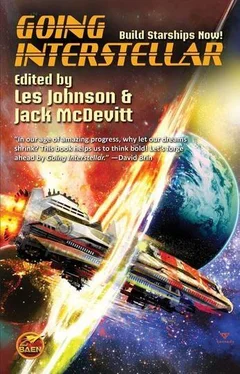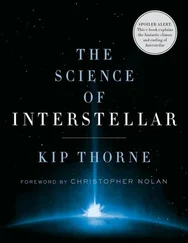In our shuttle-cum-lander, we glide from the belly of Kham Bay toward Gliese 581g, better known to all aboard the Kalachakra as Guge, “The Land of Snow.”
From here, the amiable dwarf star about which Guge swings resembles the yolk of a colossal fried egg, more reddish than yellow-orange, with a misty orange corona about it like the egg’s congealed albumin. I’ve made it sound ugly, but Gliese 581 looks edible to me and quickly trips my hunger to reach the planet below.
As for Guge, it gleams beneath us like an old coin.
In our first week on its surface, we have already built a tent camp in one of the stabilized climate zones of the nearside terminator. Across the tall visible arc of that terminator, the planet shows itself marbled by a bluish and slate-gray crust marked by fingerlike snowfields and glacier sheets.
On the ground, our people call their base camp Lhasa and the rugged territory all about it New Tibet. In response to this naming and to the alacrity with which our fellow Kalachakrans adopted it, Minister Trungpa wept openly.
I find I like the man. Indeed, I go down for my first visit to the surface with his blessing. (Simon, my father, already bivouacs there, to investigate ways to grow barley, winter wheat, and other grains in the thin air and cold temperatures.) Kyipa, of course, remains for now on our orbiting strut-ship—in Neddy’s stateroom, which he now shares openly with the child’s grandmother, Karen Bryn Bonfils. Neddy and Karen Bryn dote on my daughter shamefully.
Our descent to Lhasa won’t take long, but, along with many others in this second wave of pioneers, I deliberately drop into a meditative trance. I focus on a photograph that Neddy gave me after the mandala ceremony at the arrival celebration, and I recall his words as he presented it.
“Soon after you became a teenager, Greta, I started to doubt your commitment to the Dharma and your ability to stick.”
“How tactful of you to wait till now to tell me,” I said, smiling.
“But I never lost a deeper layer of faith. Today, I can say that all my unspoken doubt has burned off like a summer meadow mist.” He gave me the worn photo—not a hardened d-cube—that now engages my attention.
In it, a Tibetan boy of eight or nine faces the viewer with a broad smile. He holds before him, also facing the viewer, a baby girl with rosy cheeks and eyes so familiar that I tear up in consternation and joy. The eyes belong to my predecessor’s infant sister, who didn’t live long after the capturing of this image.
The eyes also belong to Kyipa.
I meditate on this conundrum, richly. Soon, after all, the Yak Butter Express will set down in New Tibet.
STARSHIP WITH 24 DROP TANKS
(mid-flight configuration)

Figure 4. The Kalachakra is an anti-hydrogen powered starship that sheds its fuel tanks and radiators—required to keep the antihydrogen cold—during flight. (Image courtesy of Geoff Landis.)
SOLAR AND BEAMED ENERGY SAILS
Les Johnson
Les Johnson’s concern for the human future is readily apparent. He has written widely about the subject, suggesting high-tech methods for preserving the environment while we solve the global energy problem, especially in his collaboration with fellow physicist Gregory Matloff and one-time NASA artist C Bangs to produce Paradise Regained ( 2010). The same trio gave us a survival handbook to take along when we begin our conquest of space, Living off the Land in Space (2007). With Matloff and Giovanni Vulpetti, Johnson suggests in Solar Sails (2008) a novel method for expanding through and possibly beyond the solar system. He has also collaborated with physicist Travis Taylor to write Back to the Moon, a novel in which the United States’ return visit, engineered by a future NASA, becomes a desperate rescue effort for a stranded Chinese mission.
When we speculate about traveling to the stars, we tend to think in terms of giant nuclear-powered rocket engines. And, admittedly, if we succeed in making the journey, they may indeed prove to be the key. But not necessarily. In fact, Johnson suggests that softer power may be the ultimate answer. Sailing vessels showed the way for early exploration on the world’s oceans. Their days may not be over.
Johnson is a physicist, the Deputy Manager for the Advanced Concepts Office at the NASA George C. Marshall Space Flight Center in Huntsville, Alabama,. and one of the editors of this book.
* * *
We can’t feel it,but the light from the Sun is pushing on us. It’s a small push, less than an ounce per square football field. Whenever we are in sunlight, or any light, we are being pushed. This solar pressure is much smaller than the other forces we experience in our everyday lives. The force of the wind from the room air conditioner vent is far stronger than the force we experience in full sunlight. It is so small that very sensitive instruments are required to measure it. And it can only be measured in a vacuum because the various forces around us will otherwise swamp the effect. But solar pressure is real, it is constant, and it can be used to propel a spacecraft to incredible speeds.
About four hundred years ago, Johannes Kepler observed that the tail of a comet appeared to be created by some sort of cosmic breeze and postulated that this breeze could be used to move ships in space in a manner similar to which the sailing ships of his day were propelled by wind. While Kepler was wrong about the nature of these cosmic winds, he was correct in his observation that something coming from the Sun, which we now know is sunlight itself, can be used to move a spacecraft.
An earthly sail moves a ship by transferring the momentum of the wind to the ship by reflecting it from a sail. The force exerted on the sail pushes the ship, causing it to move. In physics, momentum is defined as the product of mass times velocity. Lots and lots of air molecules, each having mass and some velocity, reflect from a sail and transfer their momentum to it. The ship then begins to move, its momentum coming from the wind.
In 1923, the physicist Arthur Compton observed that photons (particles of light) have momentum even though they have no rest mass. In other words, these massless particles that we call light have momentum even though they would have no mass if we could catch one and slow it down to weigh it. This is yet another weird property of light—but one that will be very useful for taking us to the stars.
Imagine a large, very thin, lightweight and very highly reflective sail deployed in space for the sole purpose of reflecting sunlight. We’ve just imagined a solar sail and they are far from imaginary. Solar sails reflect sunlight, transferring the tiny momentum of each reflected photon to the sail, causing the sail to move. The force is tiny. At the Earth’s distance from the Sun (ninety-three million miles), the force from sunlight is about five pounds per square mile. In other words, we’d have to have a sail area of one square mile to feel five pounds of force. For comparison, just one of the Space Shuttle’s main engines produces about five hundred thousand pounds of thrust. The primary difference is that the shuttle’s engines can only produce this thrust for a very short period of time before running out of fuel while a solar sail can produce thrust as long as it remains in sunlight. And since the distances involved in space travel are so large, the sail will remain in sunlight for a very long time no matter its destination.
Читать дальше













